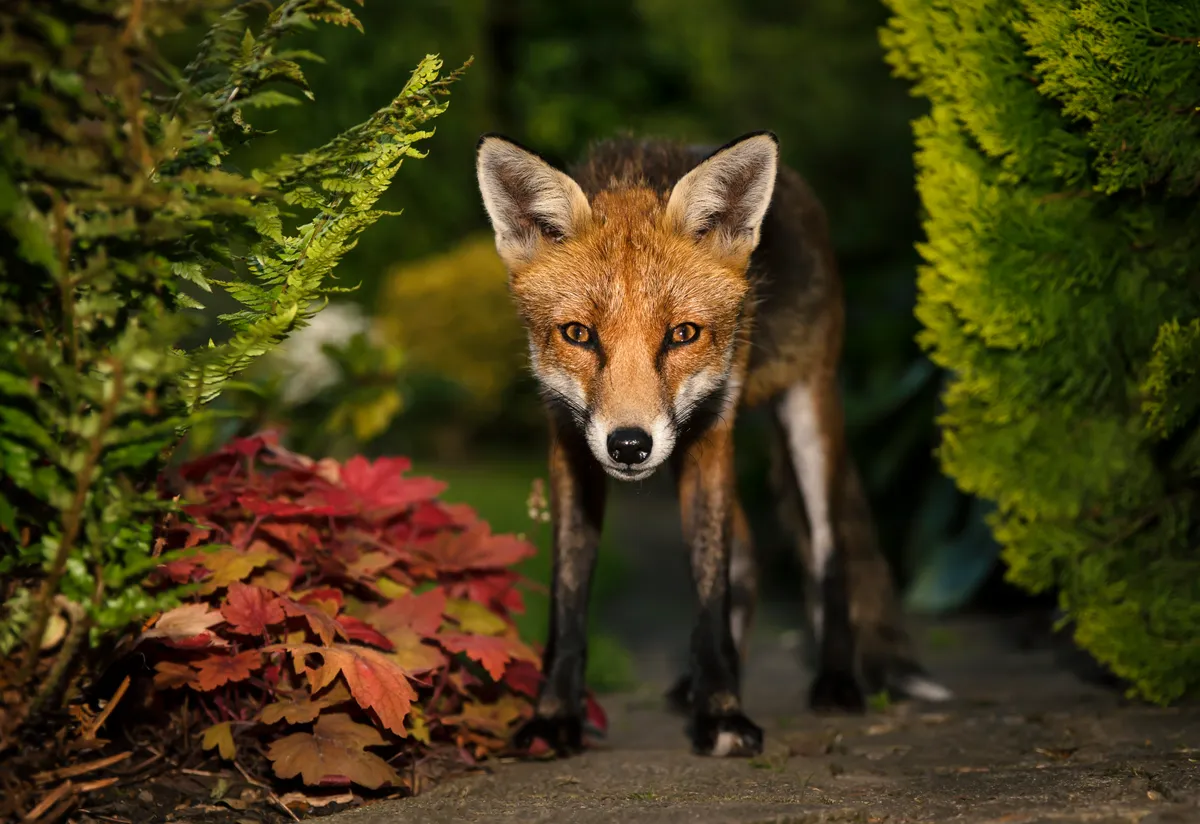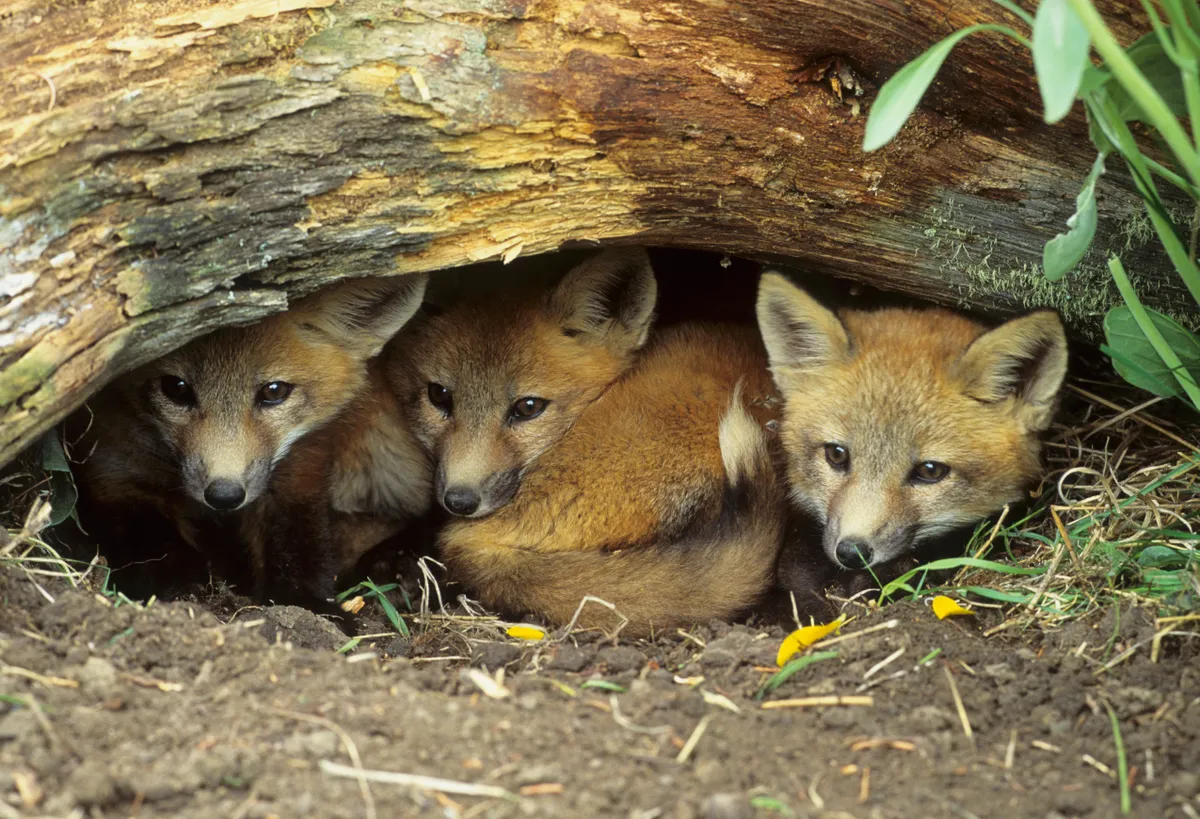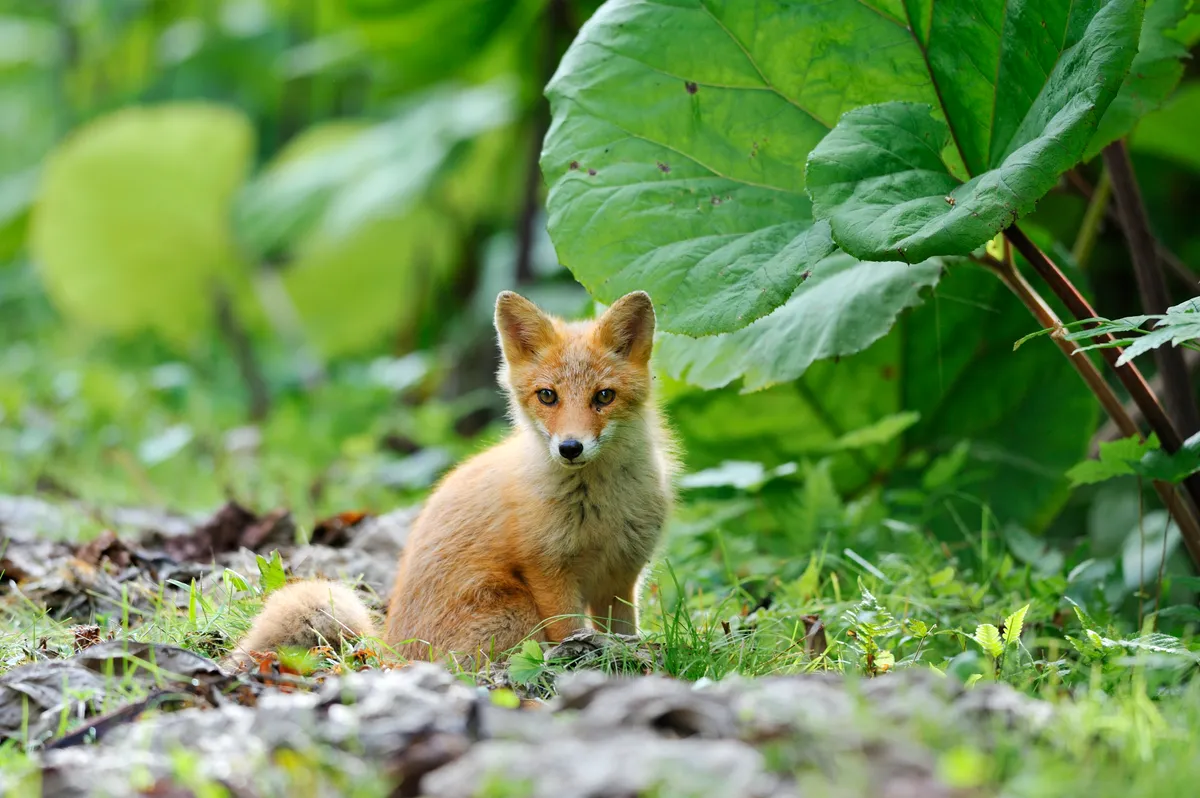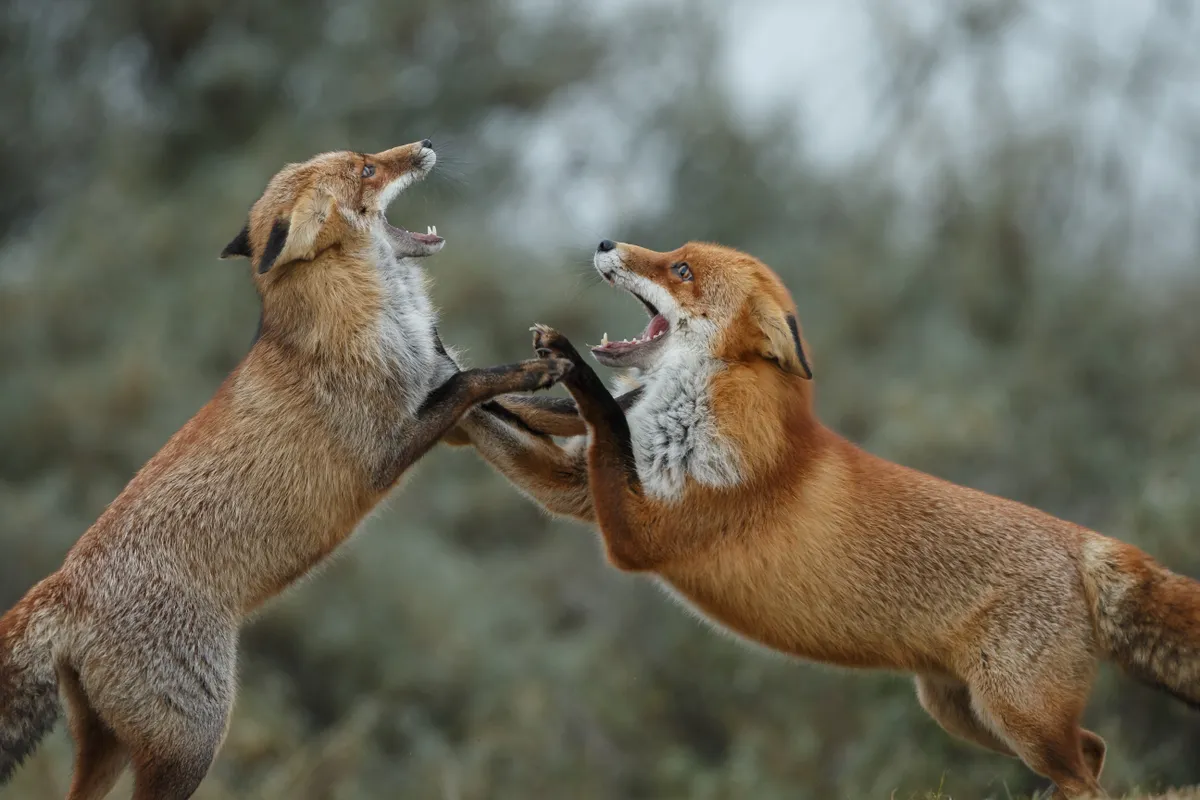January
This is the main mating period, when foxes are very vocal and most likely to wake you with screams and barks. Males roam neighbouring territories looking for receptive females; road deaths are common. The animals often stop visiting gardens for food – sex has priority.
February
By now most females are pregnant. The vixens become increasingly secretive as their due date approaches: they start clearing out potential den sites under sheds, and re-open old holes in banks and on areas of waste ground before selecting one in which to give birth.

March
The peak birth period is mid-March. Cubs are born deaf, blind and unable to thermoregulate for the first two weeks, so their mother rarely leaves them. She is provisioned by other adults in the group; their visits with food are the first sign that a den is occupied.
April
Cubs first emerge above ground in late April, when they start eating solid food. Scraps and play items accumulate around the earth. There may also be a strong smell of rotting food. Other signs that cubs have emerged include small droppings, buzzing flies and flattened plants.
May
There is now lots of activity near the den, and cubs noisily running around playing, especially at dawn and dusk. The adults make frequent visits throughout the night to bring food. If disturbed, the family will move to a new earth.

June
The breeding den may be abandoned if it gets too hot. Cubs lie up during the day in dense vegetation or rubbish piles, and the litter may be split between sites. Adults still feed them, and are often seen collecting several food items in their mouths before taking them to the young.
July
Adults are by now very thin after provisioning for three months; they also look very tatty because they are moulting. So they stop feeding the cubs and start competing with them for food, often driving them off and forcing them to explore.
August
This is generally a quiet month. Adults are recovering their body condition, while cubs may struggle to find food, especially in hot, dry summers. Hungry cubs are often seen during the day, or injured in accidents as they explore more distant parts of their natal territory.

September
Both adults and cubs have nearly finished growing new winter coats, while the young are reaching adult size. Competition between cubs, and cubs and adults, intensifies: fights can be very noisy, with rivals chasing each other or squaring up on their hindlegs. Bite wounds to forefeet are common.
October
Now is the onset of the dispersal period, with male cubs leaving first. Territorial defence increases – adults actively patrol, and can be very vocal. High levels of competition within social groups are common. Young males look for vacant territories, and many are killed on the roads as they explore.
November
The males’ peak dispersal period is November–December; some female cubs also start to leave. High levels of competition and territorial defence by adults continue – they often fight over access to food.

December
The dominant male and female are seen together more frequently, and often share their food. The pair drives other members of the social group away from the best food sources, and actively defends the territory against strangers. They make more noise as the mating season approaches.
